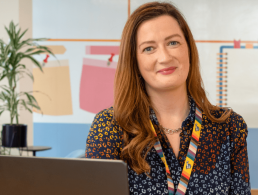The company is focusing on the future of work with a new tool called smart canvas coming to Google Workspace.
Google’s virtual I/O conference kicked off yesterday (18 May) and CEO Sundar Pichai revealed a host of new product developments during his keynote speech. These included a new language model for dialogue applications, more detailed and tailored Google Maps, and a range of new Google Workspace features.
The company is grouping its new workspace features under an umbrella called smart canvas. As TechCrunch describes it, “Smart canvas ‘smushes’ Docs, productivity and video calls together”.
And in the words of Erika Trautman, director of Google Workspace, smart canvas is the company’s “next big step” in its mission to “build the future of work”.
“As Smart Canvas drives the next era of collaboration in Google Workspace, we remain committed to providing a solution that’s flexible, helpful and that fuels innovation for organisations in every industry,” Trautman wrote in a Google blog.
“On the frontlines, in corporate offices and across the countless workspaces in between, Google Workspace will continue to transform how work gets done.”
Here are some of the features you can expect from smart canvas and the future of Google Workspace.
Smart chips for Google Workspace
According to Trautman, new smart chips will be added to Docs and Sheets so that when you mention a person in a document, you’ll also be able to see additional information such as their location, job title and contact details.
Smart chips will also pave the way for smarter meeting notes in Docs by automatically importing any relevant information from a Calendar meeting invite. Trautman said this will allow users to “quickly skim” meetings and preview documents without having to change tabs.
Assisted writing and emojis
Communication has been critical to business continuity over the past year and Google’s new features will give users new options. Its new assisted-writing feature will make recommendations for more inclusive language – for example, using ‘chairperson’ instead of ‘chairman’ – as well as stylistic suggestions.
Google Docs users will also get to use emojis to interact with one another. These will be added to Docs in the coming months.
Assisted analysis for Sheets
Like Docs, Sheets will also get more assistive technology. This will offer users more formula suggestions, with options to troubleshoot and analyse data more quickly.
New views in Sheets will also allow you to change how you visualise and interact with your data. Trautman said the first element of this will be a timeline view that lets you organise your data by owner, category, campaign and more.
Direct Google Meet calls
Users can now present their content on a Google Meet call directly from a Doc, Sheet or Slide. Later this year, you will be able to make a call directly from Docs, Sheets and Slides and see and hear colleagues as you work together.
You can also now create and edit Docs, Sheets and Slides with your colleagues while you’re in a Google Chat together.
Live translations of Google Meet captions will also arrive during the year. Google Meet already offers live captions in five languages and the first translations will convert English captions into French, German, Portuguese and Spanish.
‘Pageless’ Docs
Google Docs are going ‘pageless’. This means that you can remove the margins or boundaries of a Doc to create a page that will expand to the size of whatever screen you’re using. Trautman said this will make it easier to work with wide tables, large images and detailed feedback.
Checklists and tables
As of this week, users can access checklists in Docs. In the near future, you’ll also be able to assign items on your checklist to other people and view them in Google Tasks.
Table templates are also on the way for Docs. Two examples are topic-voting tables, which can be used to collect team feedback, and project-tracker tables, through which you can record statuses and milestones.
3D video chats
Perhaps the most ambitious feature Google discussed at I/O was its Starline project, which is working to make video chats 3D. Google VP Clay Bavor said: “Imagine looking through a sort of magic window, and through that window, you see another person, life-size and in three dimensions. You can talk naturally, gesture and make eye contact.”
These 3D video chats are being trialled in a number of Google offices at the moment, Bavor said, and more details will be shared later this year as the company progresses research in computer vision, machine learning, spatial audio and real-time compression.




